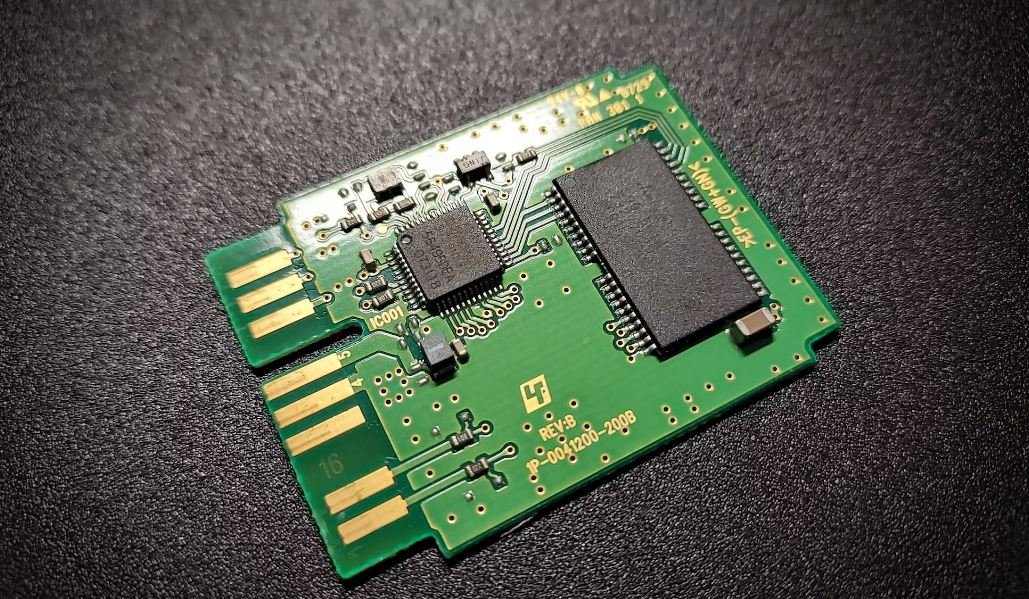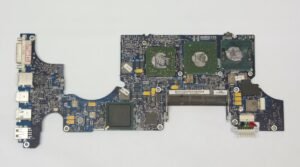Neural Network Zoo
Neural networks are a crucial component of artificial intelligence and machine learning. They are computational models inspired by the organization of the human brain and are designed to recognize patterns and make predictions. With extensive research and developments in the field of neural networks, a wide range of network architectures and variations have emerged. The neural network zoo provides a comprehensive classification of these networks and serves as a guide for understanding their purposes and functionality.
Key Takeaways:
- Neural networks are computational models inspired by the human brain.
- They are designed to recognize patterns and make predictions.
- The neural network zoo categorizes the various network architectures and variations.
Feedforward Networks
**Feedforward networks** are the simplest and most common type of neural networks. They consist of an input layer, one or more hidden layers, and an output layer. The information flows in one direction, from the input layer to the output layer, with no feedback connections. *Feedforward networks are ideal for tasks that require pattern recognition and classification.*
Recurrent Networks
**Recurrent neural networks** have feedback connections, allowing information to flow in cycles. This enables them to retain and process sequential data, making them suitable for tasks such as speech recognition and natural language processing. *Recurrent networks can model dynamic behavior and exhibit temporal dependencies in data.*
Convolutional Networks
**Convolutional neural networks** (CNNs) are commonly used for image recognition and computer vision tasks. They utilize convolutional layers to automatically learn spatial hierarchies of features from input images. *CNNs can effectively extract local and global patterns from visual data.*
| Network Type | Use Case | Advantages |
|---|---|---|
| Feedforward Networks | Pattern recognition, classification | Simple structure, generalization capability |
| Recurrent Networks | Speech recognition, natural language processing | Temporal dependencies, dynamic behavior modeling |
| Convolutional Networks | Image recognition, computer vision | Efficient feature extraction, hierarchies of spatial patterns |
Generative Networks
**Generative neural networks** aim to create new data based on the patterns observed in a given dataset. They can generate realistic images, music, and even text. *Generative networks use techniques like variational autoencoders and generative adversarial networks to learn and recreate complex distributions of data.*
Self-Organizing Maps
**Self-organizing maps** (SOMs) are neural networks used for clustering and visualization purposes. They organize high-dimensional data into low-dimensional grids or maps, facilitating the understanding and analysis of complex datasets. *SOMs are particularly helpful in exploratory data analysis and feature mapping.*
Reinforcement Learning
**Reinforcement learning** is a type of machine learning where an agent learns to make decisions by interacting with an environment. Neural networks are often employed in reinforcement learning algorithms to approximate the value function or policy of the agent. *Reinforcement learning can be applied to tasks such as game playing and robotics.*
| Network Type | Use Case | Advantages |
|---|---|---|
| Generative Networks | Image, music, and text generation | Ability to recreate complex data distributions |
| Self-Organizing Maps | Data clustering, visualization | Organize high-dimensional data for analysis |
| Reinforcement Learning | Game playing, robotics | Learn decision-making from interactions with the environment |
Conclusion
Neural networks encompass various architectural designs and applications, each tailored to address specific problems. Understanding these networks and their capabilities is crucial in unlocking the full potential of artificial intelligence and machine learning. So dive into the neural network zoo and explore the fascinating world of interconnected computational models!

Common Misconceptions
There are several common misconceptions that people have about neural networks. These misconceptions can often lead to misunderstandings and misinterpretations of the capabilities and limitations of this technology.
1. Neural networks are infallible
One common misconception is that neural networks are infallible and can always provide accurate results. However, like any other machine learning algorithm, neural networks are only as good as the data they are trained on and the quality of the algorithms used. They can still make mistakes and provide incorrect outputs, especially if the training data is incomplete or biased.
- Neural networks are not 100% accurate.
- Training data quality greatly affects neural network performance.
- Biased training data can introduce errors in neural network predictions.
2. Neural networks understand context and meaning
Another misconception is that neural networks possess a deep understanding of context and meaning in the same way humans do. While neural networks are powerful pattern recognition tools, they lack the ability to truly comprehend the context and meaning behind the data they process. They can provide accurate predictions based on patterns and correlations in the data, but they do not possess true understanding or consciousness.
- Neural networks cannot truly understand context and meaning.
- They rely on statistical patterns rather than comprehension.
- Neural networks lack consciousness or self-awareness.
3. Neural networks replace human decision-making
Many people mistakenly believe that neural networks will completely replace human decision-making processes in various fields. While neural networks can automate certain tasks and assist human decision-making, they are not meant to replace human judgment and expertise. Neural networks are tools that work in collaboration with human decision-makers to enhance efficiency and accuracy.
- Neural networks are tools, not replacements for human decision-making.
- They can assist in automating certain tasks.
- Human judgment and expertise are still crucial in conjunction with neural networks.
4. Bigger neural networks are always better
It is a common misconception that bigger neural networks are always better and produce more accurate results. While increasing the size of a neural network can improve its capacity to learn complex patterns, there is a point of diminishing returns. Building excessively large neural networks can lead to overfitting – a situation where the model becomes too specific to the training data and fails to generalize well to new, unseen data.
- Bigger neural networks can lead to overfitting.
- There is a point of diminishing returns in increasing network size.
- The optimal size of a network depends on the complexity of the problem and the available data.
5. Neural networks are always the best solution
Lastly, it is a misconception to believe that neural networks are always the best solution for every problem. While neural networks are incredibly powerful and versatile, they are not universally applicable. Certain problems may have more suitable and efficient solutions using other techniques or algorithms. It is important to consider the specific requirements and characteristics of the problem to determine the most appropriate approach.
- Neural networks are not always the most suitable solution for every problem.
- Other algorithms or techniques may provide more efficient solutions in certain cases.
- Problem-specific considerations are crucial in determining the most appropriate approach.

Introduction
Neural networks have become increasingly popular in the field of artificial intelligence. They are computational models inspired by the human brain and are capable of learning from data. In this article, we explore the fascinating world of neural networks by categorizing them into various types based on their architectures and applications.
Feedforward Neural Networks
Feedforward neural networks are one of the most basic and widely used types of neural networks. They consist of an input layer, one or more hidden layers, and an output layer. These networks process information in a forward direction, with no loops or cycles.
Recurrent Neural Networks
Recurrent neural networks (RNNs) have connections that form a directed cycle, allowing them to exhibit dynamic temporal behavior. This makes them well-suited for tasks such as sequence generation, language modeling, and speech recognition.
Convolutional Neural Networks
Convolutional neural networks (CNNs) are designed to process data with a grid-like structure, such as images. They use convolutional layers to extract features from input data and are widely used in image classification, object detection, and computer vision tasks.
Generative Adversarial Networks
Generative adversarial networks (GANs) consist of two neural networks: a generator network and a discriminator network. The generator network produces synthetic data (e.g., images), while the discriminator network tries to differentiate between real and generated data. GANs have found applications in image synthesis, style transfer, and data augmentation.
Long Short-Term Memory Networks
Long short-term memory networks (LSTMs) are a type of recurrent neural network designed to overcome the vanishing gradient problem. LSTMs use memory cells, input, and output gates to selectively remember or forget information over long sequences, making them effective in tasks involving sequential data.
Autoencoders
Autoencoders are neural networks used for unsupervised learning and dimensionality reduction. They consist of an encoder network that compresses the input data into a latent representation, and a decoder network that reconstructs the original data from the latent representation. Autoencoders have applications in image denoising, anomaly detection, and feature learning.
Radial Basis Function Networks
Radial basis function (RBF) networks are networks with radial basis functions as activation functions. RBF networks are commonly used for function approximation, interpolation, and classification tasks. They are particularly effective in solving nonlinear problems.
Self-Organizing Maps
Self-organizing maps (SOMs) are an unsupervised neural network technique used for clustering and visualization. SOMs map input data onto a lower-dimensional grid, preserving the topological relationships between data points. They have been applied to tasks like pattern recognition, data compression, and image segmentation.
Hopfield Networks
Hopfield networks are recurrent neural networks with feedback connections. They are known for their associative memory properties, which allow them to retrieve previously learned patterns given partial or noisy input. Hopfield networks have applications in content-addressable memory and optimization problems.
Conclusion
Neural networks encompass a vast variety of architectures and applications. From feedforward networks to self-organizing maps, each type serves a specific purpose in solving complex problems. As the field of artificial intelligence continues to advance, understanding these different neural network types opens up exciting possibilities in areas such as image recognition, natural language processing, and autonomous systems.
Frequently Asked Questions
Neural Network Zoo
What is a neural network?
A neural network is a computational model inspired by the structure and functions of biological neural networks in the human brain. It is composed of interconnected artificial neurons, which are responsible for processing and transmitting information.
What are the types of neural networks?
Some common types of neural networks include feedforward neural networks, recurrent neural networks, convolutional neural networks, self-organizing maps, and radial basis function networks.
What is a feedforward neural network?
A feedforward neural network is the most basic type of neural network, where the information flows only in one direction, from the input layer to the output layer. It does not have any loops or cycles, and each neuron is connected to the neurons in the next layer, forming a sequential architecture.
What is a recurrent neural network?
A recurrent neural network (RNN) is a type of neural network that is designed to process sequential data, where the output at each time step depends not only on the current input but also on the previous computations. RNNs are commonly used for natural language processing and speech recognition tasks.
What is a convolutional neural network?
A convolutional neural network (CNN) is a type of neural network that is mainly used for image and video recognition tasks. It is capable of automatically learning and extracting relevant features from the input data using convolutional layers, pooling layers, and fully connected layers.
What is a self-organizing map?
A self-organizing map (SOM), also known as a Kohonen network, is a neural network that is used for unsupervised learning, particularly for clustering and visualization tasks. It creates a low-dimensional representation of the input data while preserving the key features and topological relationships.
What is a radial basis function network?
A radial basis function network (RBFN) is a type of neural network that uses radial basis functions as activation functions. It is commonly used for function approximation and pattern recognition tasks, where the network learns to approximate a target function by adjusting the weights and centers of the radial basis functions.
How do neural networks learn?
Neural networks learn through a process called backpropagation. In backpropagation, the network is trained by iteratively adjusting the weights and biases of the neurons based on the error between the predicted output and the desired output. This error is propagated backwards through the network, allowing the network to learn to make better predictions over time.
What are the applications of neural networks?
Neural networks have a wide range of applications, including image and speech recognition, natural language processing, sentiment analysis, recommendation systems, autonomous vehicles, stock market prediction, medical diagnosis, and many more.
How can I get started with neural networks?
To get started with neural networks, you can begin by learning the basics of machine learning and deep learning. Familiarize yourself with popular deep learning frameworks such as TensorFlow or PyTorch. Additionally, there are many online courses and tutorials available that can help you understand the concepts and implementation of neural networks.




